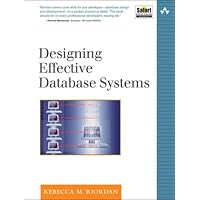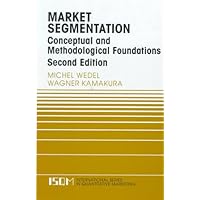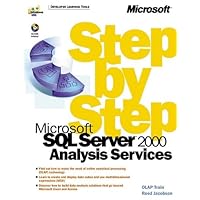
Average Reviews:

(More customer reviews)This book gives you a points-to-points look-in on various core aspects ie: component parts & pieces, which earmark & characterizes the design of an effective database system
i'd say, this is a good (first,introductory db design book). it will endow you with the vision or skills to look at/objectively qualify ,the items you need to take into consideration all along the way to designing an effective database system from the beginning of the db design lifecycle to its watershed
This book is...
- Is a good, first birds-eye view of core aspects of the database design terrain from 5,000 feet.
- It's like circling at a high altitude of the database terrain first, whilst still practically clearly seeing the individual trees from the forest.
Its a 319 page read . the detail level is just about right to serve as a quick review of items to consider.
If its sorta your first dip into data & database design , its a good place to start but i'd recommend you take this book, couple it & digest it together with a read of :"Database Design" by Sams; ISBN:0672317583 -(a terrific book!) subsequently after ;
and you'll have a really good,full 20:20 vision of the database system design domain/aspect.
digesting these together gives you a brilliant foundation.
Value: The second book(ie: the Sams book), will patch-up on areas like relationships & give you more meat on all the core checklist of items to objectively consider straight away, if say tomorrow you found yourself commencing with/starting a db design effort. it's a better cookbook.
Riordan's book then would seem a very nice starter/introduction
At this new knowledge point/vantage, you are now equipped with a greater, squarer view of the terrain at some 7,000 feet. ie: at this point, if you were interested in doing the sql-server design exam: 70-229, or the Oracle fundamentals I equivalent: 1Z0-031, everything would make so much more sense re: triggers, sprocs, functions, cursors, Business rules + Constraints, RAID Backup , Indexing, Views, the SQL angle etc. if you pick up an ExamCram2 book + Transcender, Testking or whatever you select as your exam study guide of preference, you'll be able to finally see & understand how things -(aspects of the puzzle), actually all fit together and be able to translate almost effortlessly from conceptual design aspects to the necessary logical design-blueprint , to the physical implementation aspects.
And that which you understand... you won't forget
After digesting the Riordan book followed by the Sams book, you are now ready for intermediate to proficient level. 10,000 to 12,000 feet - design proficiency.
as a 3rd level book , i'd recommend you move on to reading the following 4 (ordered here by: most-entailed to least-entailed):
(1.) Database Modelling Essentials; ISBN:0126445516 ;
Value:(brings you a solid handle on building a database model to support a businesses activities)
(2.) Database Solutions; ISBN:0321173503 ;
Value: (clarity in cruising comfortably between d relational model and a good, solid, logical design...[a great book])
(3.) Database Design for Mere Mortals; ISBN: 0201752840 ;
Value: (great for reviewing Table Relationships -(setting-up joins) and reading the ERD -[Entity Relationship Diagrams])
AND
(4.) Databases Demystified; ISBN:0072253649 ;
Value: (great for stepping you linearly through the database lifecycle again, with good explanations about what you should be sure you are doing & obtaining from each stage/step of the lifecycle)..ie: that which will be expected of you at each step/stage chunk
To cap things up, Read :
- "Beginning Relational database design" ; ISBN:1590594630 ;
Value: (pulls all your data modelling personal resource skills together and reconstitutes them for you by casting you in a role where you practice modelling a complete system from scratch ie: -[from gathering the requirements specification, to the end of the detailed conceptual database design effort for the system]);
And you'll have all the core skills you need to build/design one mean database, enterprise-oriented or otherwise or reverse-engineer one.
if you are already in the thick of a project and are really pressed to find a db design solution -[(logical) + (implementation in SQL code)] right now, maybe consider buying or looking into purchasing the pricey: "Data Model Resource CD_ROM" ;ISBN:0471388289;
Value: it boasts a library of proven: tried and tested Universal Data Models, for all Enterprise types.
So, all you'll need do is adapt or borrow a design solution/model or architecture that applies closely to what you're trying to accomplish modelling for your database project ,and adapt & implement it as a solution for the database system you are designing. it's Magic!
Though i rated d Riordan book 4 stars for the depth of its content matter, the book rates more like a 4.5 for sheer readability & clarity of explanations for such an often notoriously complex technical subject area.
I'd talk about core books that translate to laying-out a solid physical database implementation & tuning for performance, but thats gonna have to wait till maybe a future book review
cheers.
-------
Click Here to see more reviews about:
Designing Effective Database Systems (Addison-Wesley Microsoft Technology Series)"Riordan covers core skills for any developer--database design and development--in a perfect amount of detail. This book should be on every professional developer's reading list."--Duncan Mackenzie, developer, Microsoft (MSDN)"Designing a database is not a trivial subject. Riordan brings experience and clear explanations to a fundamental part of software development."--Patrick Birch, database and technical writing consultant"If you buy only one book on database design, make it this one. Riordan has a talent for explaining technical issues in simple language, without over simplifying."--Brendan Reynolds, developer, Dataset IT Systems and Microsoft Access MVP"A book that will expertly guide you in how to develop a database for a client-- and how to do it right the first time!"--Kenneth D. Snell, Ph.D., ACCESS developer and Microsoft Access MVP "Riordan has produced a unique book that brings together a formal, yet commonsense, approach to relational database design...and then goes further! Many database designers will find immense value in the steps to developing practical data warehouse designs.If you are seeking a framework for designing transactional databases, or want to step out into the world of analytical databases, Riordan's book excels at bridging both worlds."--Paul Irvine, vice president, engineering, Via Training"Riordan takes a complex subject and makes it easy. If you're over your head on a database design project, this book will help bail you out!"--Mike Gunderloy, contributing editor, Application Development Trends"This book covers a wide range of database design and data modeling topics in a well-organized, easy to understand format."--Amy Sticksel, Sticksel Data Systems, Inc."In Designing Effective Database Systems, Riordan's style, wit, and attention to detail are outstanding."--Sandra Daigle, Microsoft Access MVP The Software Developer's Step-by-Step Guide to Database Design World-renowned expert Rebecca M. Riordan has written the definitive database design book for working developers who aren't database experts. No matter how messy or complex your data challenge, Designing Effective Database Systems shows you how to design an effective, high-performance database to solve it.Riordan begins by thoroughly demystifying the principles of relational design, making them accessible to every professional developer.Next, she offers the field's clearest introduction to dimensional database modeling--practical insight for designing today's increasingly important analytical applications. One task at a time, the author illuminates every facet of database analysis and design for both traditional databases and the dimensional databases used for data warehousing, showing how to avoid common architectural pitfalls that complicate development and reduce extensibility. The book concludes with comprehensive, expert guidance on designing databases for maximum usability.This book will teach you to *Understand relational database models, structures, relationships, and data integrity principles *Define database system goals, criteria, scope, and work processes *Construct accurate conceptual models: relationships, entities, domain analysis, and normalization *Build efficient, secure database schema *Master the elements of online analytical processing (OLAP) design: fact tables, dimension tables, snowflaking, and more *Architect and construct easy, efficient interfaces for querying and reporting *Learn from practice examples based on Microsoft's Northwind sample databaseRiordan has helped thousands of professionals master database design and development, earning Microsoft's coveted MVP honor for her exceptional contributions.Nobody is more qualified to help you master database design and apply it in your real-world environment.
 Get 78% OFF
Get 78% OFF
Click here for more information about Designing Effective Database Systems (Addison-Wesley Microsoft Technology Series)










